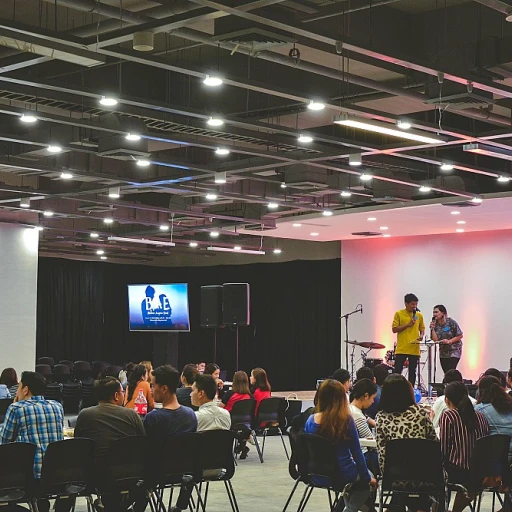Understanding the Importance of Employee Recognition
Recognizing and Valuing Every Individual's Contributions
Understanding the importance of employee recognition is vital in today’s fast-paced work environments. When employees feel appreciated for their hard work and specific contributions, they are more likely to demonstrate a positive attitude and sustained dedication. This not only enhances their personal work performance but also elevates the overall success of the team and company.
Recognition programs are more than simple gestures of appreciation. They are integral to fostering a strong company culture and help in reinforcing company values. By recognizing employees, businesses send a clear message that they value the unique efforts and dedication each team member brings to the workplace.
Employee recognition impacts job satisfaction and employee engagement, which are key elements in building a thriving organizational culture. Recognition examples such as a simple recognition message or a thoughtfully crafted recognition letter can go a long way in making employees feel valued.
Moreover, a positive workplace culture, supported by structured recognition programs, can bolster employee engagement and reduce turnover rates. When recognition aligns with company goals, it not only motivates employees but also encourages them to commit to the company’s mission with renewed enthusiasm.
For more insights on how employee recognition ties into total compensation strategies, consider exploring the topic of
understanding the impact of employee benefits. This integration underscores the multifaceted approach to valuing employee contributions beyond monetary compensation.
Personalized Recognition Strategies
Tailored Recognition for a Personal Touch
Personalized recognition strategies can play a crucial role in how employees perceive their value within the company. When individuals are acknowledged for their specific contributions, it not only boosts morale but aligns recognition with the unique attributes and efforts of each team member. This sense of individual appreciation encourages a positive attitude and enhances employee engagement.
Consider tailoring recognition efforts to align with company values and employee preferences. This could range from customized recognition messages to hand-written recognition letters that sincerely acknowledge an employee's hard work and dedication. Acknowledging an employee's commitment to a challenging project or their innovative solutions can reinforce their sense of belonging and contribution to the company's success.
Examples of personalized recognition can be:
- Acknowledging individual performance: Sending a recognition letter that highlights specific achievements and contributions to recent projects.
- Celebrating work anniversaries: Crafting personalized messages that reflect on the employee's journey and milestones within the company.
- Highlighting team successes: Recognizing when an employee goes above and beyond to support their team members, fostering a supportive workplace culture.
The power of tailored recognition lies in making employees feel valued for their unique efforts and achievements. By ensuring recognition is specific and tailored, companies can foster a culture of appreciation and engagement.
For a deeper understanding of how personalized strategies fit into a broader employee recognition framework, consider exploring resources like
Unlocking the Power of a Comprehensive Compensation Overview. By understanding how recognition ties into overall compensation and benefits, organizations can craft more holistic and impactful recognition programs.
Peer-to-Peer Recognition Programs
Cultivating a Supportive Team Through Mutual Acknowledgment
In many forward-thinking organizations, peer recognition has become an integral part of cultivating an inclusive and supportive workplace culture. Encouraging employees to recognize the hard work and dedication of their teammates not only boosts morale but also strengthens team dynamics. By fostering an environment where acknowledgment and appreciation are commonplace, companies can enhance employee engagement and overall performance.
There are several ways companies can implement effective peer recognition programs:
- Recognition Sessions: Hosting regular team meetings dedicated to recognizing the specific contributions of team members can help create a culture of appreciation. During these sessions, employees can share recognition messages or examples of colleagues' efforts that align with company values. This not only encourages a positive attitude but also reinforces what success looks like within the organization.
- Recognition Platforms: Utilizing digital recognition tools can help streamline the process, making it easy for employees to acknowledge their peers' contributions online. Platforms that offer recognition messages or digital badges add an element of fun to the process and allow for immediate feedback, fostering a positive workplace culture.
- Encouraging Balance: It's crucial to balance formal recognition with informal gestures. From a simple "thank you" to a public shout-out on a company message board, meaningful peer acknowledgment can make employees feel valued and appreciated for their hard work.
- Highlighting Achievements: Consider setting aside a section in newsletters or intranet pages to shine a light on employees' accomplishments. This promotes a cycle of recognition and inspires others toward high performance and commitment.
Incorporating peer recognition into your
workplace culture not only provides a morale boost but plays a significant role in driving engagement and nurturing a cohesive team spirit. Programs that are well-implemented and consistently practiced can transform the way appreciation is perceived and experienced in the workplace, making recognition a cornerstone of employee satisfaction and retention.
Incorporating Technology in Recognition
Leveraging Technology for Enhanced Appreciation
Employers today are increasingly turning to technology to streamline and amplify their employee recognition efforts. The use of digital platforms for recognition can lead to a more engaging and cohesive recognition program that reflects the company's culture and values.
Incorporating a specific recognition platform allows for a seamless way to appreciate and celebrate employees' hard work and dedication. Digital solutions facilitate the sharing of recognition messages, making it easy for team members to recognize peers spontaneously.
These platforms often offer a variety of features such as the ability to send personalized recognition letters and to track the positive effects of recognition on employee engagement. This is key in maintaining a positive attitude within the workplace and ensuring that employees feel valued both publicly and privately.
Moreover, mobile applications enable employees to recognize their colleagues on the go, ensuring that every effort and success is acknowledged promptly. This not only strengthens the bonds within the team, but also promotes a culture of continuous appreciation and positive reinforcement.
Finally, technology can assist in gathering data to measure the impact of recognition programs on employee performance and company culture. By doing so, companies can adapt and enhance their strategies, leading to a more motivated and dedicated workforce.
Creative Non-Monetary Recognition Ideas
Unique Ways to Showcase Employee Efforts
In today's competitive workplace, fostering a culture of appreciation extends far beyond monetary rewards. Recognizing employees, without necessarily opening the company's wallet, can go a long way in boosting morale and enthusiasm. Here are some creative ideas that can make employees feel truly valued:
- Personalized Appreciation Notes: Instead of generic messages, recognition letters that are tailored to an individual's specific contributions can have a greater impact. Acknowledging a team member's dedication to a project or their positive attitude during challenging times makes the recognition more meaningful.
- Recognition Boards: Implement a physical or digital board in a communal area where employee successes are highlighted. This could be a simple handwritten note or a digital message. Such boards foster peer recognition and encourage a culture of appreciation and engagement within the workplace.
- Team Spotlight Celebrations: Celebrate milestones or project completions with small team gatherings. This not only recognizes hard work but also strengthens team bonds and aligns with company values by promoting a positive workplace culture.
- Development Opportunities: Offer employees opportunities to attend workshops or conferences that align with their interests or roles. This not only recognizes their efforts but also invests in their professional growth, a gesture of appreciation that can lead to increased employee engagement.
- Peer-to-Peer Recognition Programs: Create a system where employees can nominate their peers for recognition. This can be facilitated with a points system or simple acknowledgement messages. Encouraging employees to recognize each other nurtures a supportive and positive environment.
Such creative, non-monetary recognition ideas can vastly contribute to a thriving company culture. They demonstrate to employees that the organization values their contributions, encouraging not only continued performance but fostering a positive and engaged workforce.
Measuring the Impact of Recognition Programs
Evaluating the Success of Recognition Initiatives
Determining how well your employee recognition initiatives are functioning is pivotal to enhancing their success. Regular assessment helps you ensure that these programs align with company values and genuinely make employees feel valued. By effectively measuring impact, you can demonstrate the benefits such initiatives have on workplace culture and employee engagement.
To efficiently measure the success of your recognition programs, consider these strategies:
- Employee Feedback: Regular surveys and feedback sessions allow employees to express how appreciated they feel. This approach gives insights into whether the initiatives resonate with the team members and meet their expectations.
- Performance Metrics: Analyze improvements in specific work performance metrics post-recognition program implementation. Look for indicators of increased productivity or positive attitudes towards work dedication and project success.
- Employee Engagement Levels: Assess changes in employee engagement scores. Improved scores may indicate that peer recognition and appreciation efforts are creating a more engaged workplace environment.
- Turnover Rates: Monitor changes in employee turnover rates. Effective recognition programs that align with company culture have the potential to reduce turnover by making employees feel more connected and appreciated.
- Recognition Program Participation: Track participation levels in recognition activities, such as the number of recognition messages sent or received. High participation suggests a positive company culture where team members actively engage in appreciation practices.
Recognition letters and messages are excellent examples of tools that can provide rich qualitative data about the program's impact. By continuously honing your strategies and measuring outcomes, you contribute to a culture of appreciation and hard work, where employees are motivated to contribute positively to the company's success.














